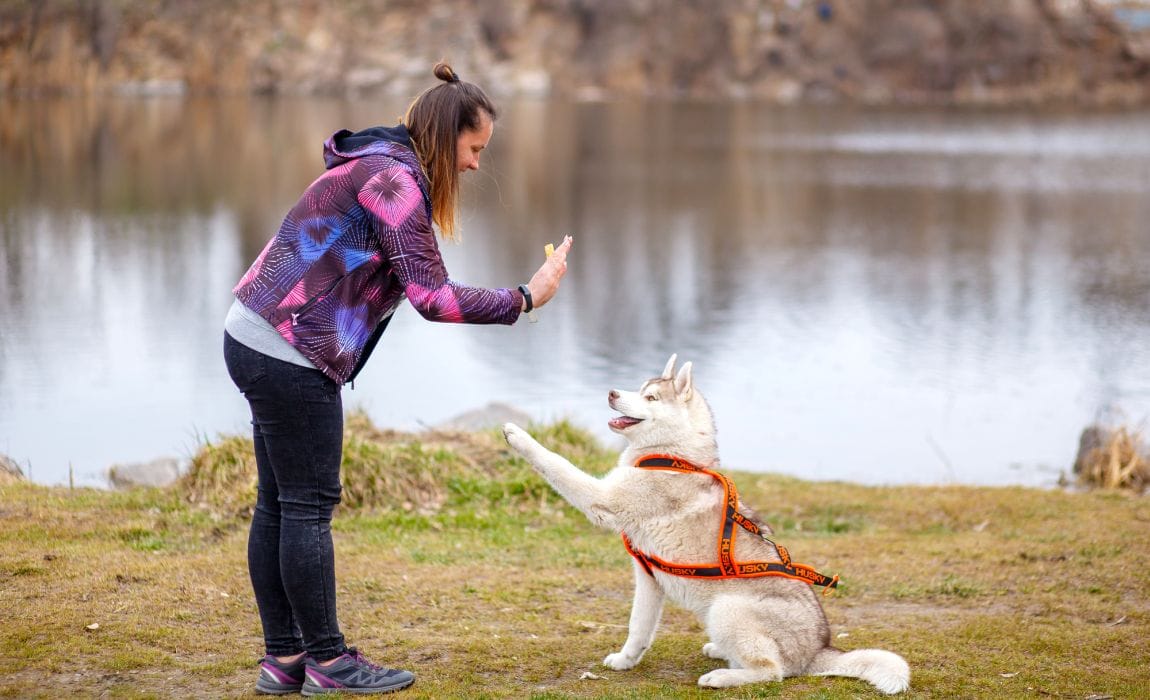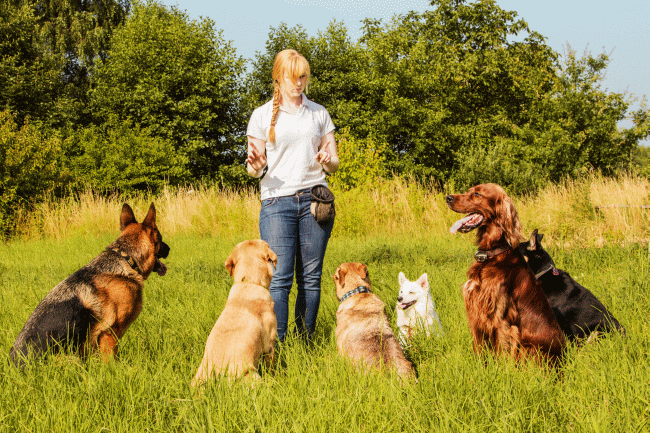Leading Canine Training Techniques Every Owner Should Know
Amongst the most famous methods are positive reinforcement, remote control training, and chain training, each offering unique advantages that contribute to a well-behaved pet dog. As we discover these essential techniques, it becomes noticeable that understanding their subtleties can substantially affect the training experience and the pet's general behavior.
Positive Reinforcement Methods
Making use of positive support techniques is necessary for reliable pet training, as it fosters a relying on bond between the pet and the fitness instructor. This approach focuses on gratifying preferable behaviors instead of penalizing unfavorable ones, creating an atmosphere for discovering. Rewards can consist of deals with, praise, or play, which inspire pets to repeat the actions that make them these rewards.
Favorable support is rooted in the principles of operant conditioning, where behavior is affected by its repercussions. By regularly satisfying details actions, instructors can form a canine's habits gradually. A dog that sits on command and obtains a reward is a lot more likely to repeat that actions in the future.
In addition, this method enhances the pet's interest for training sessions. They are a lot more engaged and receptive when canines link training with positive experiences. Beyond prompt behavior adjustment, positive support urges a collaborative relationship in between the pet and trainer, reducing anxiety and concern.
To maximize performance, it is important to supply incentives quickly, making certain the pet dog attaches the habits with the reinforcement. Basically, favorable support techniques not just produce better-trained dogs however likewise promote an unified collaboration in between pet and proprietor.
Clicker Training Technique
The remote control training technique is a highly reliable strategy that builds on the principles of positive support by adding an unique audio to mark preferred actions. This approach uses a tiny portable gadget that produces a clicking noise, enabling trainers to interact with their canines in a clear and immediate way. When a pet performs a habits that the proprietor wishes to encourage, the clicker is turned on, complied with by an incentive, normally in the form of deals with or praise.
The trick to successful remote control training depends on consistency and timing. It is crucial to click at the specific moment the desired habits happens, guaranteeing that the dog connects the noise with the action and the subsequent incentive. This approach not just improves communication but additionally promotes a more powerful bond in between the canine and the proprietor, as it motivates engagement and communication throughout training sessions.
Clicker training can be used to a selection of commands and habits, from standard obedience to extra complicated tricks. Its flexibility and efficiency make it a preferred technique among expert fitness instructors and animal owners alike, leading the means for a receptive and trained canine friend.

Chain Training Basics
Reliable leash training is crucial for guaranteeing a risk-free and satisfying walking experience for both pets and their proprietors. A flat collar may work for some canines, while others might benefit from a harness that lowers drawing.
Present your pet to the chain progressively, enabling them to discover it in a comfy environment. This entails satisfying your dog for walking next to you instead than pulling in advance.
If your pet begins to draw, stop walking quickly. Wait till they go back to your side before resuming. This educates them that pulling does not result in progress. In addition, method different strolling environments to assist your pet dog adapt to distractions.
Routine technique will certainly strengthen your pet dog's understanding of chain decorum. Bear in mind that chain training is a continuous procedure; persistence and uniformity will yield the most effective outcomes, cultivating a positive experience for both you and your canine companion.
Socializing Approaches
Socializing is a vital facet of dog training that need to preferably start throughout puppyhood yet can be useful at any type of age. Efficient socializing aids canines create self-confidence and lowers the possibility of behavior concerns. To implement effective socialization methods, expose your pet dog to a selection of atmospheres, individuals, and other pets.

Beginning with regulated setups, such as pup courses or organized playgroups, where young pet dogs can interact safely. Gradually present your pet to new experiences, consisting of different sounds, surface areas, and tasks. Guarantee these read review encounters are rewarding and positive to develop a complacency.
For adult pets or those lacking direct exposure, begin with low-stress situations. Short, favorable communications with friendly humans and tranquil pets can produce favorable organizations - Dog training. Use deals with and appreciation to reinforce desirable habits throughout these experiences
Monitoring your pet dog's body language is vital; signs of concern or aggressiveness must be dealt with right away, either by removing the canine from the situation or rerouting its focus. Consistently exposing your dog to diverse stimulations will certainly foster versatility, making it an all-round friend efficient in prospering in different setups.
Uniformity and Patience
Acknowledging the significance of consistency and patience in pet dog training see is necessary for accomplishing enduring outcomes. Training a pet is a progressive procedure that requires a structured strategy and unwavering dedication from the owner. Each command or habits must be strengthened consistently to help the dog understand what is anticipated of them. Irregular training can bring about complication, making it challenging for the canine to grasp commands or actions, eventually impeding development.
Furthermore, patience is a vital part of efficient training. Pet dogs, like humans, learn at their own pace. Some may comprehend ideas promptly, while others may take longer. It is crucial for owners to stay helpful and tranquil, strengthening favorable actions without considering irritation or punishment. This fosters a relying on relationship in between the canine and proprietor, encouraging a much more willing and passionate learner.
To cultivate consistency and persistence, develop a regular training routine, make use of the very same commands, and guarantee that all relative use the same training principles - Dog training. By doing so, you develop a stable environment favorable to discovering, enabling your canine to create and thrive right into a well-behaved companion

Verdict
To conclude, reliable pet dog training methods, such as positive reinforcement, clicker training, and appropriate find out here chain training, are essential for fostering a healthy owner-dog connection. Furthermore, executing socializing techniques and preserving consistency and patience throughout the training process contributes significantly to a dog's overall wellness. By incorporating these methods, pet owners can promote the development of well-adjusted, loyal pets, eventually boosting the top quality of life for both the proprietor and the pet.
Among the most popular techniques are positive support, remote control training, and chain training, each offering unique advantages that add to a well-behaved canine. As we explore these fundamental strategies, it ends up being evident that grasping their nuances can substantially affect the training experience and the pet dog's general habits.Making use of positive reinforcement strategies is important for reliable pet dog training, as it fosters a relying on bond in between the instructor and the pet.In final thought, effective dog training methods, such as favorable reinforcement, clicker training, and proper leash training, are essential for promoting a healthy owner-dog relationship. By incorporating these techniques, pet owners can assist in the growth of well-adjusted, loyal family pets, eventually improving the top quality of life for both the owner and the pet.